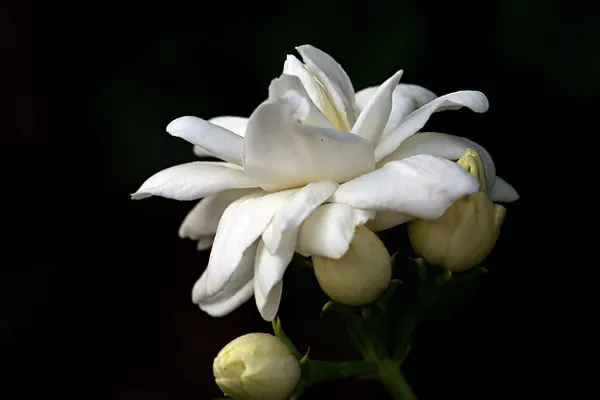Flowers have long been admired for their natural beauty and charm. Preserving these delicate botanical treasures by pressing them allows us to capture their essence and enjoy their aesthetics for years to come. While pressing flowers is a well-known art, dealing with thick or fleshy flowers can present unique challenges. In this comprehensive guide, we will explore the techniques and considerations for successfully pressing thick flowers, ensuring that their vibrant colors and intricate shapes are preserved to perfection.
Why Press Thick Flowers?
Pressing flowers, including thick ones, is a timeless practice that serves multiple purposes:
Botanical Preservation: Pressing thick flowers allows you to create herbarium-quality specimens for scientific study or documentation of your garden’s flora.
Artistic Expression: Pressed flowers are a popular choice for crafting, scrapbooking, and creating unique, personalized artwork.
Memories: Many individuals press flowers to preserve the blooms from special occasions like weddings, anniversaries, or other significant life events.
Decor: Pressed flowers can be used to create elegant, framed botanical art pieces, greeting cards, or incorporated into various DIY décor projects.
Selecting Thick Flowers for Pressing
Not all flowers are equally suitable for pressing, and the choice of blooms is critical to achieving successful results. When selecting thick flowers for pressing, consider the following factors:
Maturity: Choose flowers that are not overly mature or past their prime. The petals should be fresh and free from blemishes or signs of decay.
Flatness: Select flowers with relatively flat and even petal arrangements. This will make the pressing process easier and yield better results.
Dryness: Avoid pressing flowers that are wet or have dew on them. Moisture can lead to mold and discoloration during the pressing process.
Size: Smaller blooms are generally easier to press than larger ones. If you are new to flower pressing, start with smaller thick flowers before attempting larger ones.
Suitable Varieties: Some flowers, like pansies, violas, or hydrangeas, are naturally thick or fleshy and are excellent candidates for pressing. Other thick-petaled varieties include roses, peonies, and daisies.
Materials and Tools for Pressing Thick Flowers
Before diving into the pressing process, gather the necessary materials and tools. Here’s what you’ll need:
Thick Flowers: As mentioned earlier, select fresh, suitable thick flowers for pressing.
Blotting Paper or Newspaper: These absorbent materials help draw moisture away from the flowers during pressing.
Heavy Books or Flower Press: A traditional flower press or heavy books will provide the necessary pressure for flattening the flowers.
Parchment Paper: Use parchment paper to protect the flowers from sticking to the blotting paper or the pages of the book.
Absorbent Sheets: Additional blotting paper or absorbent sheets may be needed if you are pressing multiple layers of flowers.
Weights: Small weights or objects like stones can be useful to add extra pressure to the press.
Storage Containers: Have containers or envelopes ready to store the pressed flowers once they are ready.
Step-by-Step Guide to Pressing Thick Flowers
Pressing thick flowers requires careful attention to detail and patience. Follow these steps for successful results:
1. Gather and Prepare Flowers:
Choose your thick flowers, ensuring they are in their prime.
Remove excess leaves, stems, and any damaged or discolored petals.
If the flowers have a high moisture content, you may want to allow them to air dry for a few hours before pressing.
2. Arrange Flowers:
Open your flower press or lay out the absorbent materials (blotting paper or newspaper) on a flat surface.
Place a sheet of parchment paper on top of the absorbent material to prevent the flowers from sticking.
3. Position Flowers for Pressing:
Arrange the flowers face down on the parchment paper, making sure they are not touching or overlapping. This ensures that the petals do not become entangled.
4. Layer and Add Weight:
If you are pressing multiple layers of flowers, place additional sheets of blotting paper or newspaper on top of the first layer.
Add more parchment paper to separate the layers.
Close the flower press or stack heavy books on top to apply even pressure.
5. Allow for Drying and Pressing:
The pressing process typically takes 1 to 2 weeks. Check the flowers periodically to ensure they are drying evenly.
6. Check for Dryness:
After the designated pressing time, carefully open the press or remove the books.
Gently touch the petals to ensure they are completely dry. If any moisture remains, continue pressing for a few more days.
7. Remove Pressed Flowers:
Carefully lift the pressed flowers from the parchment paper. Be gentle to avoid damaging the delicate petals.
8. Store Pressed Flowers:
Store the pressed flowers in a cool, dry place, away from direct sunlight to prevent fading.
Tips for Successful Flower Pressing
Maintain patience throughout the pressing process. Rushing can lead to unsatisfactory results.
Label your pressed flowers with their names and the date of pressing for future reference.
Experiment with different thick flower varieties to discover which ones press best for your desired projects.
If you encounter difficulties pressing very thick flowers, consider dissecting them and pressing individual petals or smaller sections.
Conclusion
Pressing thick flowers is a rewarding and creative way to preserve their natural beauty. While it requires attention to detail and patience, the results are often stunning and can be used for various artistic, decorative, or sentimental purposes. By selecting the right flowers, using appropriate materials, and following a careful pressing process, you can create beautifully preserved thick flower specimens that will delight and inspire for years to come.


